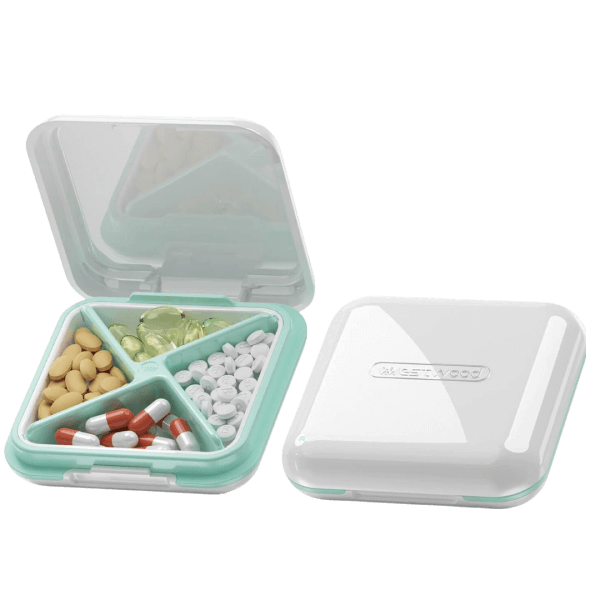
When most people think of dating violence, they often think of adult relationships. However, the reality is that teen dating violence is a serious public health issue with wide-reaching implications on physical, mental, and health. In fact, according to the Centers for Disease Control and Prevention (CDC), one in three teens will experience some form of abuse from their partner in their lifetime. It’s important that parents know the signs and symptoms of teen dating violence, as well as how to prevent it and get help if needed.
Signs and Symptoms of Teen Dating Violence
It can be difficult to spot the signs of teen dating violence. Often, teens may not even realize they are being abused by their partners or that they are engaging in an unhealthy relationship. Some signs to look out for include:
- A partner who is overly jealous or possessive
- Control over a partner’s activities or choices (such as who he/she talks to)
- Physical dating violence such as hitting, kicking, or throwing things
- Verbal abuse such as name-calling or threats and/or emotional abuse
- Using technology (such as social media or text messages) to control or harass a partner
Prevention Strategies For Teen Dating Violence
The best way to prevent teen dating violence is through education and open communication. Teens need to be aware of what healthy relationships look like, and how to spot warning signs if something isn’t right. They also need to learn how to maintain healthy relationships with guidance on setting boundaries with partners and respecting those boundaries. Parents can start by teaching teens about consent and what it means for both parties involved in a relationship. Additionally, parents should talk openly with teens about any concerns they have about their relationships or behaviors from their partners that could potentially be abusive.
Impact Of Teen Dating Violence On Society
The long-term effects of teen dating violence extend beyond just physical harm; it can cause lasting emotional damage as well. Teens who experience abuse may feel isolated from friends and family, struggle academically, miss school due to fear or anxiety caused by the abuse, engage in self-harming behaviors such as cutting, turn to drugs or alcohol for relief from stress associated with the abuse, suffer depression or PTSD symptoms due to trauma associated with the abuse—the list goes on and on. This can lead not only to decreased quality of life but also result in serious economic costs associated with medical bills, lost wages due to missed work days due to trauma-related issues, etc., making it an issue not just limited to families but society at large has an interest in tackling head-on.
Who Can Help?
Love Is Respect is an organization dedicated exclusively to helping teens deal with dating violence. They offer a 24/7 text line where teens can ask for advice or get help in abusive relationships. They also provide online chats and a collection of resources on topics like safety planning, self-care, legal information, and more. Love Is Respect also offers a peer advocate program, which provides trained advocates who can talk teens through the challenges they face while in an unhealthy relationship.
Break the Cycle is another organization dedicated to helping young people who are struggling with dating abuse or domestic violence. On their website, they provide information about warning signs of abuse and tips on how family members can start conversations about healthy relationships with their teenagers. Break the Cycle also offers educational programs designed specifically for high school students, as well as legal services for those looking for protection from an abuser.
The National Domestic Violence Hotline (NDVH) provides 24/7 support for victims of domestic violence or anyone who just needs someone to talk to about an abusive relationship. The NDVH offers free confidential counseling over the phone as well as online chat support for those who may not feel comfortable talking on the phone about their situation. Additionally, they have resources specifically tailored towards teens that include advice on how to get away from an abuser safely and where to find local help when needed.
Teen dating violence is a serious issue that affects thousands of young people every year – both directly through experiencing it themselves as well as indirectly through witnessing others experience it around them. Yet, many don’t recognize when they’re being abused until it’s too late. That’s why it’s so important for parents and other adults who interact with teens regularly to take steps towards prevention such as educating themselves about the signs and symptoms so they can intervene early before the situation escalates. Fortunately, there are resources to support victims seeking help after escaping an abusive relationship. With proper awareness and education, we can help ensure no teen ever has to suffer from this type of abuse again!
Teen Dating Violence FAQs
What Is intimate partner violence?
Intimate partner violence (IPV) is defined as any physical, sexual, emotional, and/or economic abuse that occurs between two people in an intimate relationship. IPV can involve a single incident or repeated incidents of abusive behavior. It affects all genders, ages, and sexual orientations.
Physical abuse includes hitting, slapping, shoving, or other use of physical force against the victim’s body. Sexual abuse includes forcible rape or sexual assault and other forms of unwanted contact such as harassment or threats to commit a sex act.
Emotional abuse includes verbal insults and name-calling; isolation from friends and family; control over access to finances; humiliation or intimidation tactics such as destroying property; stalking; monitoring activities online through networks like Facebook and Twitter; restricting the use of the computer and phone for communication with others without their consent; withholding affection; constant criticism; threatening suicide if the victim does not comply with requests – these are all examples of emotional manipulation used in IPV.
Economic abuse involves controlling access to money by limiting financial independence through practices including making it impossible for someone to obtain employment outside the home, using false accusations about job performance in order to get fired, holding wages hostage, forcing one’s partner into prostitution, stealing money from bank accounts, etc. These types of actions prevent victims from leaving abusive relationships due to a lack of resources. Victims sometimes experience multiple forms of IPV at once which increases their vulnerability even more substantially.
It is important for victims suffering from IPV to understand they are not alone in this situation and that there are professionals trained in dealing with different types of domestic violence who they can reach out to receive help legally, psychologically, or any other way necessary so they can find safety away from an abuser.
How big of a problem is teen dating violence?
Dating violence is a serious public health problem that affects thousands of teenagers each year. The Centers for Disease Control and Prevention (CDC) estimate that between 9.4% and 11.5% of high school students have experienced physical dating violence in the past 12 months, and between 10.9% and 20.2% have experienced sexual dating violence in the same period of time. On average, worldwide, it’s estimated that 25-50 percent of teenage girls report experiencing physical or sexual intimate partner abuse at least once during their teenage years from someone they were romantically involved with over the last 12 months.
When examining teen dating violence specifically by gender, females are more likely to report having been victims than males; about 1 in 3 females and 1 in 5 males reported having experienced some form of violence from an intimate partner as a teen. Looking further into the numbers reveals even more alarming statistics: Native American teens experience higher rates than other racial/ethnic groups – 4 out of 5 are affected by such abuse. LGBTQ youth also experience higher rates – 46 percent report being physically abused while 47 percent report being sexually abused by a romantic partner!
In addition to physical and psychological abuse, digital aggression is also becoming increasingly common among teenagers in relationships – particularly those between 18-24 years old. More than 1 in 3 young adults aged 18-27 reported they had experienced electronic aggression such as having embarrassing photos shared online without their consent or receiving threatening text messages from partners. It’s important for all parents, caregivers, and educators to discuss healthy relationships with teens so they are aware of how dangerous these behaviors can be before entering into any type of relationship with someone else.
Teens engaged in unhealthy relationships exhibit low self-esteem and its association with higher rates of suicidal ideation has been well documented In addition, it’s important to note that abusive relationships can have long-lasting effects on a young person’s life ranging from depression, anxiety, PTSD., eating disorders, and substance abuse. It is essential that teenagers learn how to spot warning signs associated with potentially unhealthy relationships so they can avoid entering into dangerous situations and get help if needed.
How does teen dating violence usually start?
Teen dating violence usually begins when one partner exerts control over the other through behaviors such as verbal or physical abuse. It can be difficult to recognize that a relationship is abusive because these behaviors often start off small and escalate over time. Examples of controlling behavior include:
- Making decisions for the other person, such as what they can wear, who they talk to, and where they go
- Blaming the victim for their behavior
- Manipulating them into feeling guilty or manipulating them into staying in an unhealthy relationship
- Isolating them from friends, family, and activities they enjoy
- Cyberbullying or monitoring their social media accounts/text messages closely
- Stalking or making repeated requests to know their whereabouts at all times
- Reacting with anger if the victim does not follow orders quickly enough
Often times this type of behavior is intentional and meant to intimidate, manipulate, threaten harm, belittle, shame, and humiliate the victim. According to LoveIsRespect.org (2020), “Teen dating violence is defined as ‘the physical, sexual psychological or emotional violence within a dating relationship’”1 This can include threatening physical harm or injury against another person in intimate relationships like marriage as well as any romantic partnerships. In addition, it includes digital forms of harassment such as cyberstalking which involves repeatedly sending someone unwanted messages on social media platforms. Sexual assault may also be included under teen dating violence since it happens within relationships between current partners, potential dates, etc. Teens should speak up if they experience any type of abuse- whether physical/sexual/emotional/verbal – within their relationships so that necessary steps can be taken towards ensuring safety for themselves in such situations. If you are aware of someone who may suffer from teen dating violence then it’s important that you report it immediately so help can be provided accordingly.
What are the risk factors for teen dating violence?
The risk factors for teen violence are complex and involve a variety of social, economic, cultural, family, community, and individual factors. While there is no single cause of youth violence, research suggests that exposure to certain adverse experiences or environments can increase the likelihood of violent behavior in teens.
Teen violence is often the result of both environmental and individual risk factors that make young people more vulnerable to aggressive behavior. Common environmental risk factors include: living in an urban environment with significant poverty or concentrated disadvantage; witnessing violence in one’s home or neighborhood; experiencing physical/emotional/sexual abuse; growing up in a household where parents model aggressive behavior; being exposed to media messages glorifying aggression; being exposed to firearms or other weapons. Individual-level risk factors most commonly associated with teen violence include attitudes supportive of aggression, impulse control issues (such as poor frustration tolerance), low rates of parental involvement (both engaged monitoring and authoritative discipline), low academic achievement/performance, belonging to a gang/peer group exhibiting delinquent behaviors, prior delinquency behaviors including previous acts committed by the adolescent themselves.
It is important for adults working with adolescents to be aware that these risk factors may lead teens toward violent activity if not addressed appropriately. Early identification and comprehensive intervention strategies are needed in order for this outcome can be avoided. Mental health professionals can work together with families and communities on primary prevention activities such as promoting positive school climates through student support programs like Positive Behavioral Interventions Systems (PBIS). Social service interventions focused on improving family functioning along with increased recreational opportunities also have been found effective at reducing teen violence rates. By providing positive alternatives to risky behaviors combined with good mental health care when necessary – we can help ensure our children stay safe while they develop into successful adults

What Can Women Do to Reduce Their Risk for Heart Disease?
If you had a pregnancy complicated by a hypertensive-related disorder(preeclampsia, gestational hypertension, HELLP Syndrome, Chronic Hypertension, etc.) please monitor the health of your heart. Also, review your obstetrical and family history with your physician too.
See your healthcare provider and make lifestyle modifications to lower your risks. You may consider seeing a cardiologist to have a cardiac echo and a stress test sooner rather than later. Eat a healthy diet and exercise regularly. Maintain a healthy weight with a BMI between 19 and 25. No smoking.
Finally, monitor your blood pressure, cholesterol, and blood glucose(blood sugar)levels. Regular blood pressure checks are important with the goal to maintain blood pressure around 120/80. Cholesterol and HbA1c blood tests are essential too. Aim to keep your total cholesterol under 200mg/dl, HDL(good cholesterol) equal to or greater than 50mg/dl, LDL(bad cholesterol) under 100mg/dl, and triglycerides less than 150 mg/dl. The goal should be to keep your HbA1c at or under 5.7%. If higher, make efforts to lower it.
Preeclampsia and Related Complications FAQs
What is preeclampsia?
Preeclampsia is a serious health condition that affects about 3-5% of all pregnant women worldwide. It is characterized by an elevation in high blood pressure along with excessive protein in the urine—which can lead to complications for both mother and baby if not detected or treated early on. Common signs and symptoms of preeclampsia can include high blood pressure, swelling, headaches, vision changes, rapid weight gain from fluid retention, frequent urination, and abdominal pain amongst others.
If left untreated for too long, preeclampsia can become more severe (known as eclampsia) which may cause seizures or even coma. It is therefore important that any pregnant woman who experiences any combination of these symptoms should receive medical attention as soon as possible to minimize risks associated with the condition.
Treatment options vary depending on the severity of preeclampsia but typically involve the administration of medications to lower blood pressure and the use of magnesium sulfate to prevent seizures; bed rest; monitoring fetal growth; restricting activity levels; ensuring adequate nutrition either orally or through IVs if necessary; periodic ultrasounds to monitor fetal development; delivery induction before 37 weeks gestation if deemed necessary due to risk level posed by the condition. In some cases, deliveries may need to happen sooner than expected via cesarean section depending on how urgent care needs are determined by a health professional responsible for prenatal care. Postpartum follow-up appointments where blood pressures are monitored should also be undertaken.
Overall it is important for any expecting mother who suspects she might have pregnancy-related hypertension, to reach out for medical attention right away so treatment recommendations specific to their individual profile can be made accordingly!
What is my risk of developing chronic hypertension and/or diabetes after having preeclampsia?
The risks of developing chronic hypertension and/or diabetes after having preeclampsia are increased for certain women. According to a large study published in the Journal of Hypertension, women who developed preeclampsia were 64 percent more likely to develop chronic hypertension within five years than those without preeclampsia. Moreover, the risk of developing type 2 diabetes was also elevated; women with a history of preeclampsia were 30–60 percent more likely to be diagnosed with type 2 diabetes compared to those without pre-existing conditions.
It is important to note that not all women are at an elevated risk for these conditions following a diagnosis of preeclampsia. However, it is recommended that all pregnant women discuss their personal risk factors with their healthcare providers so they can make informed decisions about preventative measures or lifestyle changes which may lower the chances for chronic high blood pressure and/or diabetes if diagnosed with pre-eclampsia during pregnancy. Additionally, regular checkups after delivery should include evaluations for high blood pressure and other signs indicating the possible development of either condition. Ultimately, by staying well informed on your individual risks and being proactive in maintaining your health you can help minimize any potential long-term complications associated with this condition.
What is gestational hypertension and what are the associated risks for cardiovascular disease?
Gestational hypertension sometimes referred to as “high blood pressure during pregnancy”, is a condition characterized by the development of high blood pressure during pregnancy. While this form of hypertension does not usually cause any lasting health effects for mothers, it may be associated with certain cardiovascular risks for both mother and baby.
Gestational hypertension occurs in about 7-10% of pregnancies, making it relatively common. This type of high blood pressure typically develops after the twentieth week of pregnancy and resolves after delivery. In some cases, however, gestational hypertension can persist beyond the postpartum period – often leading to greater cardiovascular risk factors and long-term health complications if left untreated or uncontrollable.
In terms of associated cardiovascular risks with gestational hypertension; research has shown that severe cases could increase the risk for maternal mortality due to stroke or heart attack if unmanaged properly over time. Additionally, gestational hypertension can potentially cause fetal growth restriction (FGR), preterm birth (PTB), and preeclampsia – all conditions that can lead to further health issues in the child’s lifetime including cardiac stress levels & infantile morbidity rates being higher than average in some cases.
Importantly though – women who suffer from mild hypertensive episodes during pregnancy need not fear too much as modern medicine has advanced enough so most cases like these can now be easily managed via medications such as diuretics; avoiding more serious consequences on both mother & baby’s part in most scenarios.
How can I prevent developing heart failure, stroke, or heart attack later in life after having preeclampsia?
Preeclampsia is a serious medical condition that can increase the risk of developing heart failure, stroke, or a heart attack later in life. Therefore, it is important to take steps to reduce your risk of these potentially devastating complications. Here are some evidence-based strategies for preventing the development of these conditions after preeclampsia:
1) Healthy Eating: Eating a healthy diet rich in nutritious foods such as fruits, vegetables, and whole grains can help decrease your risk of developing cardiovascular disease (CVD). Additionally, limiting your intake of processed food and high-sugar foods can also be beneficial.
2) Exercise Regularly: Increasing physical activity levels can have numerous beneficial effects on your overall health and well-being. Aim for at least 30 minutes of moderate-intensity exercise five times per week to reduce the risk of CVD over time. This could include activities like walking, jogging, or swimming.
3) Don’t Smoke/Limit Alcohol Consumption: Smoking increases the chances of developing atherosclerosis which can lead to heart attack or stroke. Therefore it is best to quit smoking when possible while limiting alcohol consumption if you choose not to give up smoking altogether.
4) Manage Blood Pressure & Cholesterol Levels: High blood pressure and cholesterol levels are common causes of CVD. So monitoring them regularly and taking necessary steps such as medications or lifestyle changes will be important in reducing long-term risks associated with preeclampsia.
5) Monitor Your Health Regularly: It is essential that any underlying conditions that may develop due to preeclampsia such as diabetes should be identified early through regular checkups by a qualified doctor who understands how preeclampsia affects CVD. This would allow any treatments needed earlier on rather than waiting until symptoms become severe enough that irreversible damage has been done already.
By following these simple guidelines and involving professional healthcare providers you should be able to effectively manage potential risks associated with developing heart failure, stroke, or heart attack later in life after having had preeclampsia.














